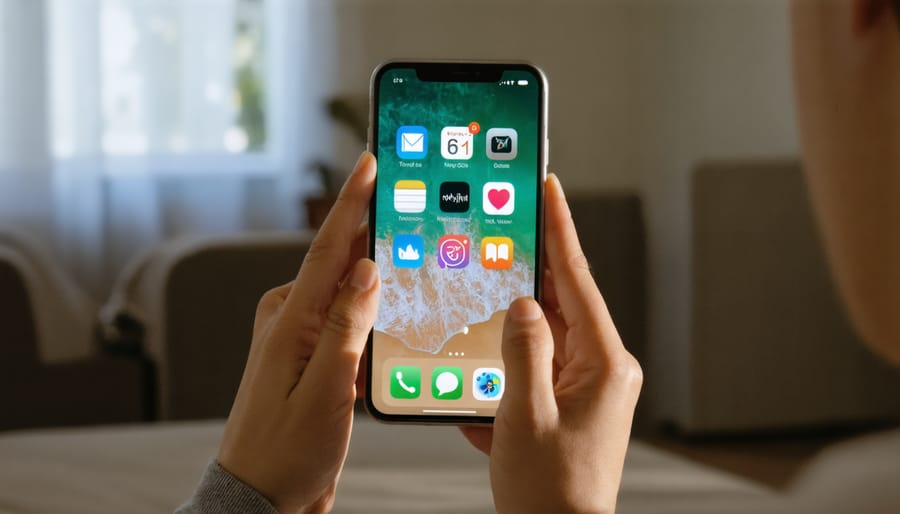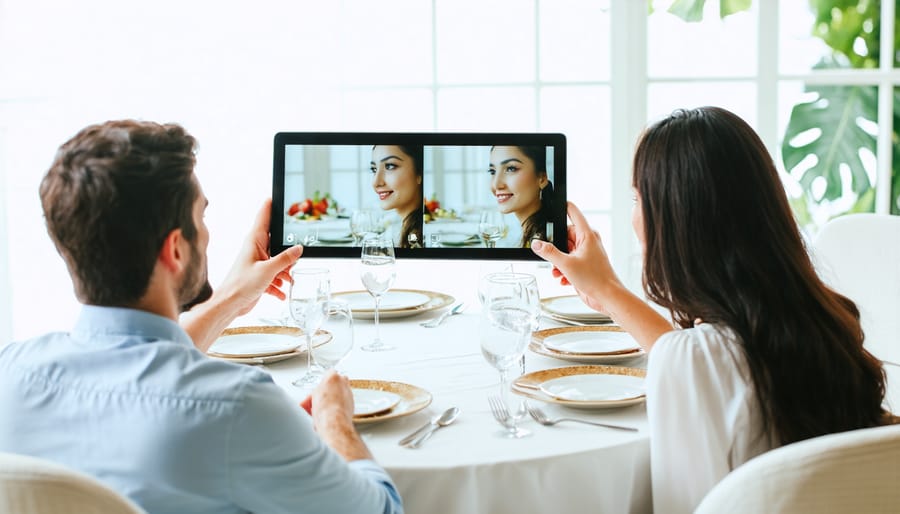
In today’s hyper-connected world, our screens have become both a gateway and a barrier to meaningful connections. Learning to navigate this digital landscape with intention and purpose isn’t just helpful—it’s essential for our mental health and relationships. Smart digital communication starts with understanding when to engage and when to disconnect.
Think of your digital presence as a garden that needs regular tending. Just as you wouldn’t let weeds overtake your flowers, you shouldn’t let digital distractions overshadow your real-life connections. From morning notifications to evening scrolling sessions, each digital interaction shapes our relationships, productivity, and well-being.
The challenge isn’t about choosing between digital and real-world connections—it’s about creating a harmonious blend that enriches rather than depletes our lives. Whether you’re managing a remote team, maintaining long-distance friendships, or simply trying to stay connected with loved ones, mastering digital navigation skills has become as crucial as learning to read and write.
Together, we’ll explore practical strategies for creating healthy digital boundaries, nurturing authentic online relationships, and using technology as a tool for connection rather than a source of distraction. Because in this increasingly virtual world, staying human has never been more important.
The New Language of Love

Emojis and Emotional Expression
Remember when we used to rely solely on words to express our feelings in text messages? Those days are long gone! Today’s digital communication comes with a colorful array of emojis that help us add emotional depth to our messages, making our virtual connections feel more authentic and personal.
As someone who frequently catches myself peppering my messages with heart emojis and laughing faces, I’ve discovered how these tiny symbols can transform a simple “thank you” into a heartfelt expression of gratitude. They’re like the digital equivalent of facial expressions and tone of voice – adding crucial emotional context that might otherwise get lost in translation.
But it’s not just about making messages prettier. Emojis can help prevent misunderstandings in our relationships. A playful wink emoji can clarify when we’re joking, while a heart emoji can soften constructive feedback. They’ve become such an integral part of our emotional vocabulary that sending a message without them can sometimes feel oddly formal or cold.
Pro tip: While emojis are wonderful tools for expression, remember to use them thoughtfully. Just like in face-to-face communication, context matters, and sometimes words alone carry more weight than any symbol could.
Text Timing and Relationship Dynamics
In our fast-paced digital world, the timing and frequency of our messages can significantly impact our relationship dynamics. We’ve all been there – staring at those three dots appearing and disappearing, or feeling anxious when a response takes longer than expected.
Here’s what I’ve learned: there’s no universal “right” response time. What matters is establishing communication patterns that work for both parties. Some couples thrive on constant connection, while others prefer designated check-in times. The key is finding your rhythm and being transparent about your preferences.
Consider creating gentle agreements about response expectations. For instance, my partner and I agreed that work hours mean delayed responses, but we always acknowledge important messages with a quick “got it, will respond later.” This simple practice has eliminated so much unnecessary stress.
Remember that digital communication patterns often reflect deeper relationship needs. If you’re feeling anxious about response times, it might be worth exploring whether this stems from trust concerns or attachment styles. Being honest about these feelings with yourself and your partner can lead to more meaningful conversations and stronger connections.
Setting Digital Boundaries

Creating Communication Guidelines
In today’s digital landscape, clear communication guidelines are essential for maintaining healthy relationships, much like balancing relationship expectations in other aspects of life. I’ve found that establishing these guidelines early on can prevent misunderstandings and strengthen connections.
Start by having an open conversation with your loved ones about digital communication preferences. Consider discussing response time expectations – while some might prefer immediate replies, others may need more space between messages. Create agreements that work for everyone, such as designating “offline hours” or using specific apps for different types of communication.
One approach that’s worked well for many of my readers is the “traffic light system.” Green means casual conversation is welcome, yellow indicates busy but available for important matters, and red signifies unavailable except for emergencies. This simple framework helps manage expectations and reduces anxiety around digital availability.
Don’t forget to address tone and context in written communications. Emojis and reaction features can help convey emotion, but it’s worth establishing when a conversation needs to move from text to voice or video call. Remember to revisit and adjust these guidelines periodically – what works today might need tweaking tomorrow as our digital habits evolve.
The key is finding a balance that respects everyone’s boundaries while maintaining meaningful connections in our increasingly connected world.
Managing Social Media Presence
Let’s be honest – we’ve all had those moments where we’ve wondered if we’re sharing too much (or too little) of our relationships online. As someone who once accidentally shared a private conversation with my partner on my public story instead of close friends (oops!), I understand the delicate balance we’re all trying to strike.
The key to managing your social media presence while in a relationship is establishing clear boundaries with your partner. Have an open conversation about what you’re both comfortable sharing online. Some couples love posting their daily moments together, while others prefer keeping things private – and both approaches are perfectly valid!
Consider creating a simple “sharing agreement” with your partner. This might include guidelines about posting photos, checking before sharing personal moments, or deciding how to handle relationship milestones on social media. Remember, what works for one couple might not work for another.
A helpful tip is to pause before posting and ask yourself: “Would I be comfortable with this being shared if roles were reversed?” This simple question can help guide your decisions about what to share online.
Don’t feel pressured to maintain a picture-perfect social media presence. The healthiest relationships often find a sweet spot between sharing genuine moments and maintaining privacy. Focus on nurturing your real-world connection first, and let your online presence naturally reflect that authentic relationship.
Building Intimacy Through Screens
Quality Virtual Time
In today’s digital landscape, quality virtual time doesn’t have to feel like a compromise. Whether you’re maintaining long-distance connections or simply finding new ways to connect, there are countless creative opportunities to make online interactions meaningful and memorable.
Consider hosting virtual cooking sessions where everyone prepares the same recipe simultaneously. The shared experience of chopping, stirring, and occasionally burning things creates natural conversation and plenty of laughs. For the book lovers in your circle, digital book clubs can spark deep discussions and create intimate connections through shared stories.
Movie nights have evolved too! With watch party features on streaming platforms, you can sync your viewing and chat in real-time. I recently watched an entire season of my favorite show with my sister who lives across the country – our running commentary made it feel like we were right there on the same couch.
For families with young children, interactive online games and virtual scavenger hunts can turn screen time into bonding time. Try creating themed video calls where everyone dresses up or decorates their background according to a specific theme – it’s amazing how such simple additions can transform a regular catch-up into an event worth remembering.
Remember, it’s not about the technology itself, but how we use it to create genuine moments of connection and joy.
Digital Date Ideas
Who says romance has to fade just because we’re in different zip codes? I’ve discovered that digital dates can be just as meaningful as traditional ones – sometimes even more creative! Let me share some of my favorite virtual date ideas that have helped countless couples stay connected.
Transform your screen time into quality time with a virtual cooking date. Pick a recipe together, prop up your devices in your respective kitchens, and create the same meal while chatting away. The best part? You can still share a candlelit dinner, even if it’s through FaceTime.
For the culture enthusiasts, many museums now offer virtual tours. Explore the Louvre or the Metropolitan Museum of Art together, sharing your thoughts about each masterpiece as you navigate the digital halls. It’s like holding hands through history, minus the tired feet!
Game nights have gone digital too. Whether it’s online chess, multiplayer apps, or virtual escape rooms, there’s something incredibly bonding about problem-solving together. I recently tried a virtual paint and sip session with my partner – we ordered the same wine and followed an online tutorial together. The results were hilariously imperfect, but the memories were priceless.
Don’t forget the power of simple shared experiences. Watch a movie in sync using streaming party features, create collaborative playlists, or even take an online dance class together. Sometimes, it’s these little digital moments that keep the spark alive across any distance.

Navigating Digital Conflicts
Common Digital Misunderstandings
Let’s be honest – we’ve all been there. That moment when a friend’s “k” response makes your heart sink, or when you spend way too long analyzing why someone hasn’t responded to your message despite being “active” online. In our digital world, these little misunderstandings can snowball into bigger issues if we’re not careful.
I recently experienced this myself when a colleague’s brief “thumbs up” reaction to my detailed project proposal left me wondering if she was dismissing my ideas. It turned out she was just incredibly busy and actually loved the concept – a reminder that we often read too much into digital interactions.
The key to preventing these communication breakdowns lies in understanding that digital messages lack the nuance of face-to-face conversation. Without tone of voice, facial expressions, or body language, we’re missing about 93% of what makes communication complete. This is why emojis have become such a valuable tool – they help bridge that emotional gap, even in professional settings.
To avoid misunderstandings, try these practical approaches:
– Ask for clarification when unsure about tone
– Use voice messages for complex conversations
– Schedule video calls for important discussions
– Give others the benefit of the doubt
– Remember that everyone has different digital communication styles
Most importantly, when in doubt, pick up the phone or arrange a face-to-face meeting. Sometimes, a five-minute conversation can prevent hours of digital anxiety and misinterpretation.
Healthy Digital Conflict Resolution
Last week, I found myself in a heated group chat discussion about planning a friend’s baby shower, and it reminded me how quickly digital conversations can spiral. The truth is, navigating conflict online requires a different set of skills than face-to-face interactions, but it’s absolutely possible to handle disagreements gracefully in the digital space.
First, pause before responding. When you receive a message that triggers an emotional response, take a deep breath and step away from your device for at least 15 minutes. This cooling-off period helps prevent reactive responses you might later regret.
Choose your communication channel wisely. Some conversations are better suited for a phone call or video chat rather than text or email. If you’re dealing with a sensitive topic, consider whether your chosen platform allows for proper tone and nuance.
Practice the “reframe and reflect” technique. Before responding to a potentially confrontational message, try to reframe the sender’s perspective and reflect their concerns in your response. For example, “I understand you’re frustrated about the project deadline, and I want to find a solution that works for everyone.”
Remember the human behind the screen. It’s easy to forget there’s a real person with real feelings on the other end of that message. Use “I” statements to express your feelings and needs clearly: “I feel overwhelmed when I receive work messages after 8 PM” rather than “You’re always bothering me late at night.”
Finally, know when to take the conversation offline. If you’ve exchanged more than three messages without making progress, it’s probably time to schedule a call or in-person meeting to resolve the issue.
As we navigate this increasingly digital landscape, it’s crucial to remember that technology should enhance our connections, not replace them. I’ve learned this lesson firsthand during countless video calls with my sister – while they’re wonderful for staying in touch, they can’t quite replicate the warmth of our monthly coffee dates.
Finding your perfect balance between digital and in-person interactions is deeply personal. Think of it as creating your own unique recipe for connection, where digital tools are the seasoning that enhances the main dish of face-to-face relationships. Some days might call for more virtual interaction, while others might benefit from putting the phone away and meeting a friend for a walk.
Remember, it’s not about choosing between digital and physical connections – it’s about thoughtfully integrating both into your life. Try setting aside dedicated screen-free time for deep conversations with loved ones, while using digital tools to maintain those relationships between meetings. Share photos of your day-to-day moments, send quick supportive messages, but don’t let these replace the magic of in-person gatherings.
As we continue to evolve in this digital age, let’s embrace technology’s ability to keep us connected while cherishing the irreplaceable value of human touch, shared laughter, and eye contact. After all, the most meaningful connections often happen when we close our laptops and open our hearts to genuine, present-moment interactions.



